Keywords
Dopamine; Uric acid; Ascorbic acid; Pioglitazone hydrochloride; Modified carbon paste electrode; Sodium dodecyl sulphate (SDS); Cyclic voltammetry
Introduction
The modified carbon paste electrodes gaining prominence importance right now in electroanalytical techniques due to their low cost, chemical inertness, good electron transfer ability and ease of handling. The electrochemical response of carbon paste electrode mainly depends on the properties of the modifying species. The modification of the carbon paste electrode can be done by different ways like grinding in an agate mortar [1-4], electropolymerization [5,6] and immobilization method [7]. One of the most important properties of modified carbon paste electrode is their ability to catalyze the electrode process via significant decreasing of over potential with respect to unmodified electrode. Modified electrodes are capable of enhancing the selectivity in electro analytical methods. Here we attempted to construct a new drug based sensor for the detection of neurotransmitters, drug is a substance used to diagnosis the disease. Pioglitazone Hydrochloride is an oral anti-hyperglycaemic agent; it is a class of anti-diabetic drugs are named as thiazolidinediones. It increases insulin sensitivity in target tissues. Insulin is a hormone it acts as a chemical messenger it helps our body to use the glucose to give energy. Type -2 diabetes occurs when the pancreas is not able to produce adequate insulin or the insulin does not work efficiently or the cells of the body do not respond appropriately to insulin therefore the Pioglitazone Hydrochloride is used together as monotherapy and in combination with sulfonylurea or insulin in the management of type 2 diabetes mellitus (noninsulin- dependent diabetes mellitus, NIDDM) [8,9]. Dopamine, uric acid and ascorbic acid are vital biomolecules which plays very important role in physiological process. Dopamine is one of the important neurotransmitter; it plays a very important role in cardiovascular, renal, hormonal, and central nervous and immune systems. The abnormal level of dopamine is an indicator for some diseases like Schizophrenia, Parkinson’s, Alzheimer, and HIV infection [10-12]. Uric acid is the primary purine base product of metabolism in human body [13]; it is well known of its natural anti-oxidant property [14]. Uric acid produced from the breakdown of hypoxanthine by hypoxanthine-guanine phosphoribosyl transferase (HGPT) [15]. Deficiency of HGPT can affect dopaminergic neurons and dopamine concentrations [16]. The extreme abnormality of uric acid level is symptom of several diseases such as Hyperuricemia, gout, and pneumonia [17]. Several methods have been proposed for simultaneous determination of dopamine in presence of uric acid and ascorbic acid, such as capillary electrophoresis [18] chromatography [19,20], fluorescence [21]. However electrochemical techniques are more attractive and fascinating due to their low cost and less time consumption, but mainly they are suffering from selectivity because dopamine, uric acid, ascorbic acid have close oxidation potentials so it’s very complicated to identify individual peaks in voltammogram. Electroactive nature of dopamine, uric acid and ascorbic acid makes their detection possible by electrochemical methods based on anodic oxidation [22,23].
Surfactants are surface active agents; the surfactants are referred to as amphiphiles. The polar hydrophilic part of the molecule is called lipophobic group and the non-polar hydrophobic part is called lipophilic group, the hydrophilic part of the molecule is called head and hydrophobic part is called tail. Sodium dodecyl sulphate is a class of anionic surfactant. The surfactants have numerous applications in electrochemistry like electroplating [24], corrosion [25], fuel cells [26], electro catalysis [27], and electro analysis [28]. The electron transfer process for the oxidation of dopamine in presence of anionic surfactant Sodium dodecyl sulphate is quicker due to electrostatic attraction of positively charged dopamine with anionic surfactant Sodium dodecyl sulphate [29-32].
In this present work, we introduced a Pioglitazone Hydrochloride/ SDS modified carbon paste electrode for the detection of dopamine. The fabricated sensor selectivity was examined by selective determination of dopamine in presence of uric acid and ascorbic acid. In order to evaluate the drug based sensor capability the determination of dopamine in pharmaceutical preparations were performed. The detection limit observed for dopamine and uric acid was compared with several other modified electrodes in Table 1. The structure of Pioglitazone Hydrochloride as shown in Scheme 1.
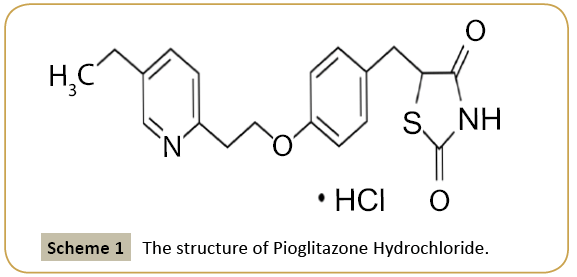
Scheme 1: The structure of Pioglitazone Hydrochloride.
| Sample |
DA added (M) |
Found (M) |
Recovery (%) |
| 1 |
0.1× 10-4 |
0.9985× 10-4 |
99.85 |
| 2 |
0.2×10-4 |
0.1988× 10-4 |
99.42 |
| 3 |
0.3×10-4 |
0.2929× 10-4 |
97.63 |
Table 1: Detection of DA in injection samples (n=3).
Experimental Part
Reagents and chemicals
Pioglitazone Hydrochloride was received from Biocon limited Bangalore. Dopamine and silicon oil were purchased from HI media. Graphite powder was purchased from Lobe chemical company with analytical grade used without further puriï¬ÂÂÂÂcation. Sodium dihydrogen phosphate monohydrate and disodium hydrogen phosphate were purchased from Merck. Dopamine stock solution was prepared in 0.1 M perchloric acid, Sodium dodecyl sulphate, potassium ferro cyanide and KCl was prepared in double distilled water.
Apparatus
Cyclic voltammetric experiments were performed on a model CHI-660c (CH Instrument-660 electrochemical work station). The entire experiments were carried out in a conventional three electrode cell. The electrode system includes a bare carbon paste electrode (BCPE) Pioglitazone hydrochloride/SDS MCPE as working electrode, platinum wire and saturated calomel as a counter and reference electrode.
Electrode preparation procedure
Preparation of bare carbon paste electrode: The bare carbon paste electrode was prepared by manual grinding of graphite powder and silicon oil at a ratio of 70:30 (w/w) in an agate mortar to get homogenous paste. The prepared carbon paste was firmly packed into the cavity of a homemade electrode and then polished the surface by rubbing on a weighing paper.
Modification of bare carbon paste electrode: The modified Pioglitazone Hydrochloride carbon paste electrode was prepared by using 5 mg of Pioglitazone Hydrochloride, graphite powder and silicon oil at the ratio of 70:30 (w/w) in an agate mortar by manual grinding to get homogenous paste. The obtained paste was tightly packed into the cavity of a homemade electrode, polished the surface by rubbing on a weighing paper then immobilize the SDS solution on the surface of Pioglitazone hydrochloride modified electrode to fabricate Pioglitazone hydrochloride/SDS electrode. Later the electrode was systematically rinsed using distilled water to remove the unabsorbed modiï¬ÂÂÂÂer and dried in air at room temperature.
Results and Discussion
The electrochemical response of potassium ferrocyanide at pioglitazone hydrochloride/SDS modified carbon paste electrode
The electrochemical characterization of Pioglitazone Hydrochloride/SDS modified carbon paste electrode was carried out by using potassium ferrocyanide and KCl solution as a supporting electrolyte to check the current improvement property of the fabricated electrode. Figure 1 shows the cyclic voltammograms obtained for the electrochemical response of potassium ferrocyanide at bare carbon paste electrode (dotted line), Pioglitazone Hydrochloride modified carbon paste electrode (solid line), Pioglitazone Hydrochloride/SDS modified carbon paste electrode (dashed line) for 1mM potassium ferrocyanide in 1M KCl solution with scan rate of 100 mV/s. The Pioglitazone Hydrochloride modified carbon paste electrode shows small increased current signal as compared to the bare carbon paste electrode, However the Pioglitazone Hydrochloride/SDS modified carbon paste electrode exhibit a well defined redox peak with great enhancement of peak current as compared to the bare carbon paste electrode. It reveals the excellent sensitivity of Pioglitazone Hydrochloride/SDS modified carbon electrode towards the electrochemical detection of dopamine.
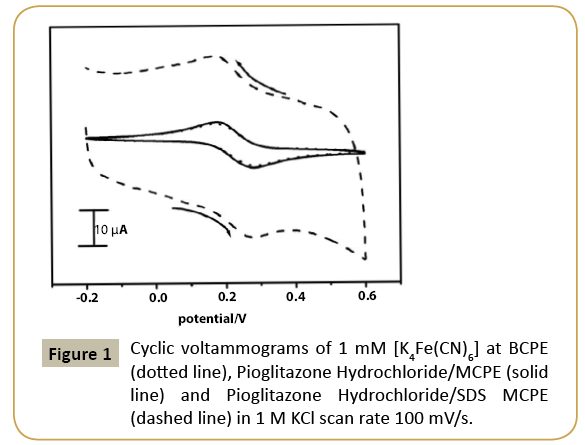
Figure 1: Cyclic voltammograms of 1 mM [K4Fe(CN)6] at BCPE (dotted line), Pioglitazone Hydrochloride/MCPE (solid line) and Pioglitazone Hydrochloride/SDS MCPE (dashed line) in 1 M KCl scan rate 100 mV/s.
Electrochemical response of dopamine at pioglitazone hydrochloride/SDS modified carbon paste electrode
The Figure 2 shows cyclic voltammograms of 5 μM dopamine at bare carbon paste electrode (dotted line), Pioglitazone hydrochloride modified carbon paste electrode (solid line), Pioglitazone Hydrochloride/SDS modified carbon paste electrode (dashed line) in 0.2 M phosphate buffer solution at pH 7.2 with a scan rate of 100 mV/s. This result favour that the electrochemical response of dopamine at Pioglitazone Hydrochloride/SDS modified carbon paste electrode was increased remarkable as compared to the bare carbon paste electrode and Pioglitazone Hydrochloride modified carbon paste electrode. It specifies that the electrochemical response of dopamine was enhanced at Pioglitazone Hydrochloride/SDS modified carbon paste electrode, due to enhanced accumulation of protonated dopamine via electrostatic interaction with negatively charged Sodium dodecyl sulphate at modified electrode.
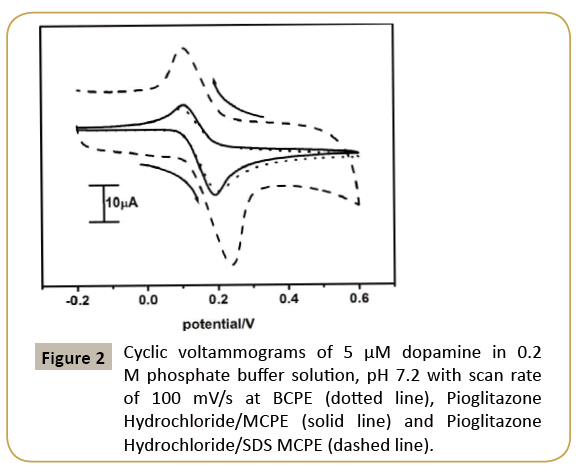
Figure 2: Cyclic voltammograms of 5 μM dopamine in 0.2 M phosphate buffer solution, pH 7.2 with scan rate of 100 mV/s at BCPE (dotted line), Pioglitazone Hydrochloride/MCPE (solid line) and Pioglitazone Hydrochloride/SDS MCPE (dashed line).
Effect of scan rate at Pioglitazone hydrochloride/ SDS modified carbon paste electrode
The different scan rate study was performed to understand the electrochemical mechanism of Pioglitazone Hydrochloride/ SDS modified electrode, it displays a reflective effect on the oxidation peak current of dopamine. The Figure 3a shows cyclic voltammograms for 5 μM dopamine at Pioglitazone Hydrochloride/SDS modified carbon paste electrode under varying scan rate from 50 to 550 mV/s, at pH 7.2 in 0.2 M phosphate buffer solution as a supporting electrolyte. The scan rate altering studies shown that the current enhanced linearly with increasing scan rate from 50 to 550 mV/s. The anodic peak potential shifted towards positive direction and cathodic peak potential shifted towards negative direction with increase in scan rate. In Figure 3 the graph of anodic peak current (Ipa) versus square root of scan rate gave a straight line with correlation coefficient value of 0.9960, it indicates that the electron transfer reaction was under diffusion controlled [33-37].
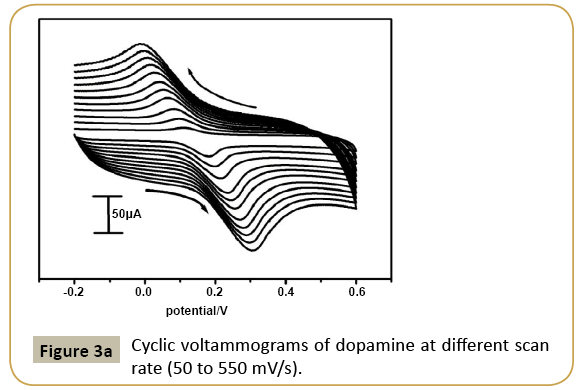
Figure 3a: Cyclic voltammograms of dopamine at different scan rate (50 to 550 mV/s).
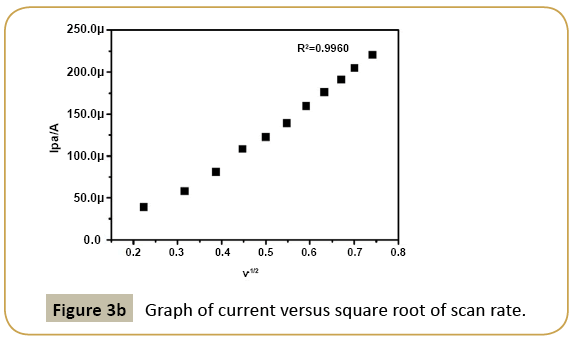
Figure 3b: Graph of current versus square root of scan rate.
Effect of different concentration of dopamine at pioglitazone hydrochloride/SDS modified carbon paste electrode
The Figure 4a shows the cyclic voltammograms for different concentration of dopamine from 10 to 50 μM in 0.2 M phosphate buffer solution of pH 7.2 with a scan rate of 100 mV/s at Pioglitazone Hydrochloride/SDS modified carbon paste electrode. The different concentration of dopamine was prepared to investigate its redox behaviour; the redox peak current was steadily increased with increasing the concentration of dopamine and slightly the anodic peak potential shifted towards positive direction, cathodic peak potential shifted towards negative direction. The Figure 4b shows the graph of Ipa versus concentration of dopamine and it results that the anodic peak current was directly proportional to the concentration of dopamine.
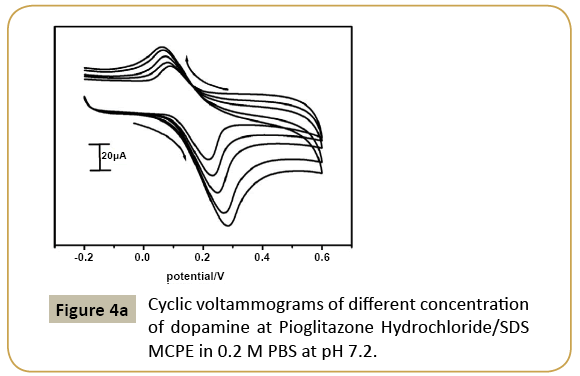
Figure 4a: Cyclic voltammograms of different concentration of dopamine at Pioglitazone Hydrochloride/SDS MCPE in 0.2 M PBS at pH 7.2.
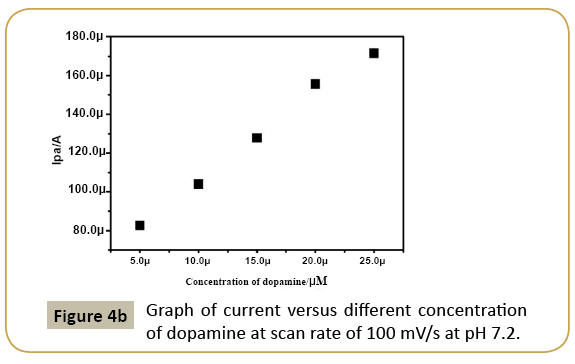
Figure 4b: Graph of current versus different concentration of dopamine at scan rate of 100 mV/s at pH 7.2.
Effect of SDS concentration and immobilization time
The Figure 5a shows the graph of anodic peak current versus different concentration of SDS at Pioglitazone Hydrochloride/SDS modified carbon paste electrode. The result reveals the influence of SDS to enhance the electrochemical property of modified Pioglitazone Hydrochloride carbon paste electrode. It helps to optimise the condition of modified carbon paste electrode to get maximum peak current. Varying concentration of SDS on the surface of Pioglitazone Hydrochloride modified carbon paste electrode results increase in anodic peak current from 1 to 5 μl, further increasing the SDS concentration the anodic peak current goes on decreases from 5 to 25 μl. In the same way, the immobilization time also influence the anodic peak current of dopamine, it was examined by changing the immobilization time on the surface of Pioglitazone Hydrochloride modified carbon paste electrode. The Figure 5b shows the graph anodic peak current (Ipa) versus immobilization time it specifies that the anodic peak current achieved more at 5 min after that anodic peak current decreases. Therefore, for further electrochemical studies we selected 5 μl of SDS with immobilization time 5 min to fabricate Pioglitazone Hydrochloride carbon paste electrode.
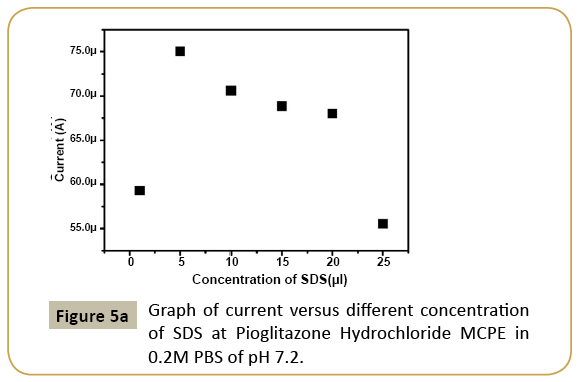
Figure 5a: Graph of current versus different concentration of SDS at Pioglitazone Hydrochloride MCPE in 0.2M PBS of pH 7.2.
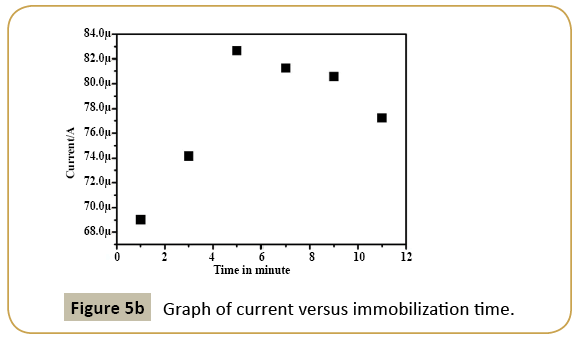
Figure 5b: Graph of current versus immobilization time.
Effect of pH for electro-oxidation of dopamine at pioglitazone hydrochloride/SDS modified carbon paste electrode
The effect of supporting electrolyte pH for the electro-oxidation of dopamine was investigated by cyclic voltammetry to realize the mechanism of electrochemical reaction of dopamine at Pioglitazone Hydrochloride/SDS modified carbon paste electrode. The results in Figure 6a reveal that the pH value of supporting electrolyte influences the peak current and peak potential value of analyte. The electro-oxidation of dopamine was studied with increase in the pH value from 6.0 to 8.0 the anodic peak potential shifted negatively from 313 to 172 mV at a scan rate of 100 mV/s. The result confirms that the oxidation peak potential is pH dependent, it indicates that protonation/deprotonation is taking part in electrochemical process. The potential diagram Figure 6b was constructed by plotting the graph of anodic peak potential verses pH of supporting electrolyte, the slope found to be 60 mV/pH unit, it indicates that the equal number of protons and electrons were involved in electrochemical oxidation of dopamine [38]. The anodic oxidation peak current (Ipa) of dopamine increases gradually with increasing pH from 6.0 to 7.0 then peak current decreased and the maximum current achieved at pH 7.0 as shown in Figure 6c hence the physiological pH 7.2 was chosen to carry out for extended work.
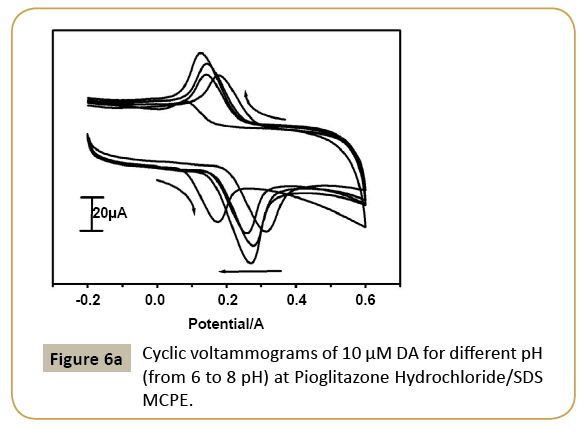
Figure 6a: Cyclic voltammograms of 10 μM DA for different pH (from 6 to 8 pH) at Pioglitazone Hydrochloride/SDS MCPE.
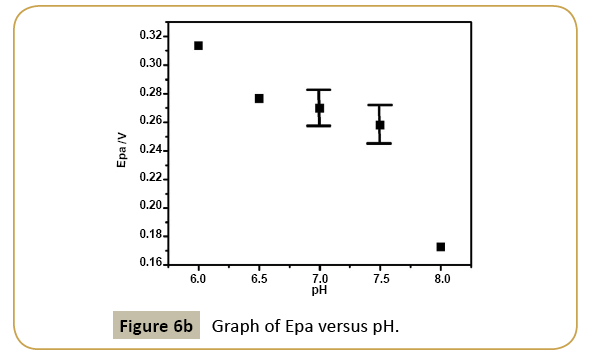
Figure 6b: Graph of Epa versus pH.
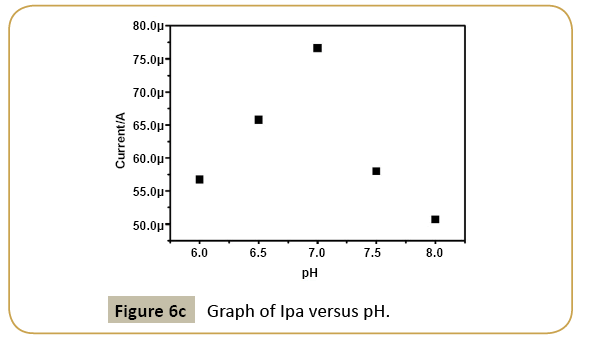
Figure 6c: Graph of Ipa versus pH.
Simultaneous detection of dopamine, uric acid and ascorbic acid
The main aim of this method was to detect dopamine, uric acid and ascorbic acid in a mixture because they are coexisting in physiological sample. The Figure 7 shows the cyclic voltammograms obtained for the electrochemical response 5 μM DA, 10 μM UA and 10 μM AA in 0.2 M phosphate buffer solution of pH 7.2 at BCPE (solid line) Pioglitazone Hydrochloride/SDS MCPE (dashed line). The bare carbon paste electrode resulting overlapped peak and it fails to locate individual anodic peak potential for dopamine, uric acid, and ascorbic acid, though the Pioglitazone Hydrochloride/SDS modified electrode evidently shows three well distinct peaks at oxidation peak potentials 163 mV, 287 mV and -50 mV for dopamine, uric acid, and ascorbic acid with great improvement of anodic peak current. The observed result reveals that the selectivity of the modified carbon paste electrode towards the detection of dopamine in presence of uric acid and ascorbic acid.
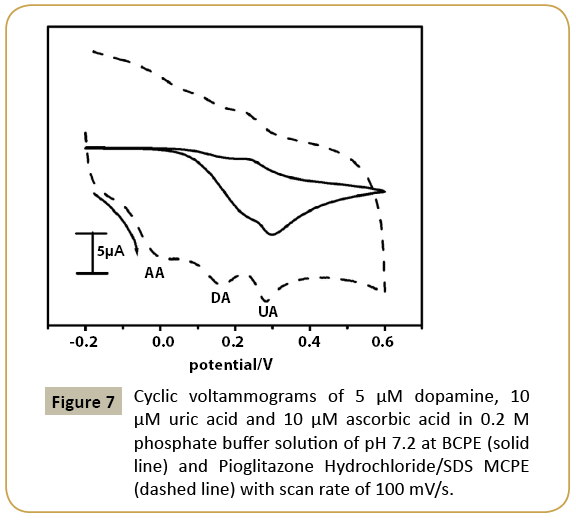
Figure 7: Cyclic voltammograms of 5 μM dopamine, 10 μM uric acid and 10 μM ascorbic acid in 0.2 M phosphate buffer solution of pH 7.2 at BCPE (solid line) and Pioglitazone Hydrochloride/SDS MCPE (dashed line) with scan rate of 100 mV/s.
Interference study
The interference study was carried out by differential pulse voltammetry; it offers better current sensitivity with peak resolution. The Figure 8a shows differential pulse voltammograms for mixture solution of dopamine, uric acid and ascorbic acid, it showed well resolute anodic peaks at peak potential value for 8 μM dopamine at 112 mV, 12 μM uric acid at 242 mV and 10 μM ascorbic acid at -62 mV. The simultaneous determination of dopamine, uric acid and ascorbic acid in a mixture was investigated by changing the concentration of one species and concentration of other two species kept constant. The Figure 8b shows that the anodic peak current of dopamine was increased with respect to their concentration from 3 to 18 μM while the concentration of uric acid 5 μM and ascorbic acid 8 μM was kept constant. The Figure 8c shows differential pulse voltammograms of different concentrations of uric acid with fixed concentration of dopamine 3 μM and ascorbic acid 8 μM. The concentration of uric acid was increased from 5 to 30 μM and it results enhanced anodic peak current was directly proportional to the concentration of uric acid. The result authenticates that anodic peak current and concentration of species have a linear relationship. Varying the concentration of one analyte does not alter the peak current and the peak potential of another analyte. The limit of detection was calculated by using equation (2) [39]
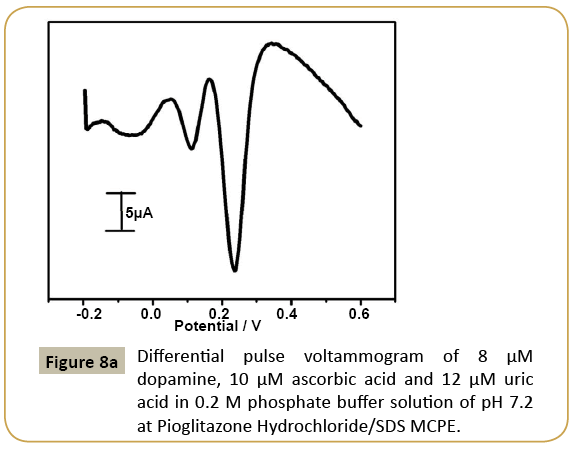
Figure 8a: Differential pulse voltammogram of 8 μM dopamine, 10 μM ascorbic acid and 12 μM uric acid in 0.2 M phosphate buffer solution of pH 7.2 at Pioglitazone Hydrochloride/SDS MCPE.
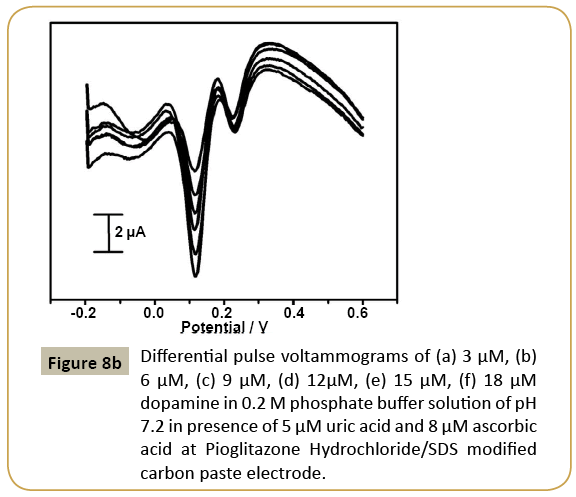
Figure 8b: Differential pulse voltammograms of (a) 3 μM, (b) 6 μM, (c) 9 μM, (d) 12μM, (e) 15 μM, (f) 18 μM dopamine in 0.2 M phosphate buffer solution of pH 7.2 in presence of 5 μM uric acid and 8 μM ascorbic acid at Pioglitazone Hydrochloride/SDS modified carbon paste electrode.
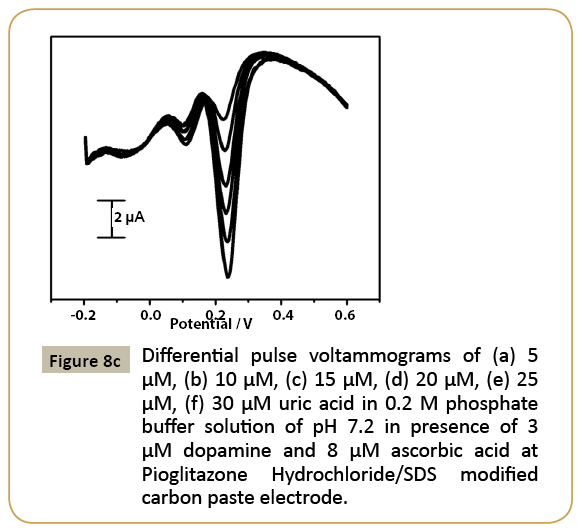
Figure 8c: Differential pulse voltammograms of (a) 5 μM, (b) 10 μM, (c) 15 μM, (d) 20 μM, (e) 25 μM, (f) 30 μM uric acid in 0.2 M phosphate buffer solution of pH 7.2 in presence of 3 μM dopamine and 8 μM ascorbic acid at Pioglitazone Hydrochloride/SDS modified carbon paste electrode.
LOD=3S/M (2)
Where S is the standard deviation and M is the slope obtained from the calibration plot. The detection limit of dopamine and uric acid were found to be 1.081 and 1.147 μM respectively. The results authenticate the prospect of the simultaneous detection of dopamine in presence of uric acid and ascorbic acid at Pioglitazone Hydrochloride/SDS electrode. These studies powerfully recommend that the Pioglitazone Hydrochloride/SDS modified carbon paste electrode may be used in electrochemical sensor applications.
Real sample analysis
To evaluate the applicability; the constructed sensor Pioglitazone Hydrochloride/SDS modified carbon paste electrode was used for the analysis of dopamine in injection sample. The dopamine injection was purchased from Sterile Specialities India Pvt. Ltd with a specified content of dopamine of 40 mg/mL; the dopamine injection sample was diluted with 0.2 M phosphate buffer solution for suitable concentration. The results shown in Table 2 indicates that the projected drug based modified carbon paste electrode retained its efficiency for the determination of dopamine in injection sample with recovery in the range from 97.63 -99.85%.
| Analyte |
Electrode |
Method |
Detection limit(μM) |
References |
| DA |
Ag/Ag2S-CNT-Nafion |
DPV |
4.7 |
[40] |
| DA |
SWCNT/GCE |
DPV |
7.0 |
[41] |
| DA |
Fc-MCPE |
CV |
9.4 |
[42] |
| DA |
Banana/MWCNTs/MCPE |
DPV |
2.0 |
[43] |
| DA |
Pioglitazone Hydrochloride/SDS MCPE |
DPV |
1.08 |
Present work |
| UA |
α-CD/CNT/CPE |
DPV |
5.0 |
[44] |
| UA |
CNT/PEDOT |
DPV |
10.0 |
[45] |
| UA |
Pioglitazone Hydrochloride/SDS MCPE |
DPV |
1.14 |
Present work |
Table 2: Detection limit for dopamine previous and present work.
Conclusion
The present work depicts the construction of drug/SDS based sensor and its application for the electrochemical analysis of dopamine. The differential pulse voltammetric response has shown promising for the selective detection of dopamine without interference at modified electrode. The modified Pioglitazone Hydrochloride/SDS electrode had superior characteristics such as sensitivity, selectivity with low detection limit; the projected sensor is fit for real sample analysis of dopamine in injection sample. The significant characteristics of the drug based modified carbon paste electrode will expand its application in electrochemical field for the determination of other drugs and neurotransmitter.
References
- Shreenivas MT, Kumara Swamy BE, Chandra U, Sharath Shankar S, Manjunatha JG, et al. (2010)Electrochemical Investigations of Dopamine at Chemically Modified Losartan Carbon Paste Electrode: A Cyclic Voltammetric Study.Int J Electrochem Sci 5:774-781.
- Chandra U, Kumara Swamy BE, Gilbert O, Sherigara BS (2010) Determination of Dopamine in presence of Ascorbic Acid at Eriochrome Black T Modified Carbon Paste Electrode: A Voltammetric Study.Int J Electrochem Sci5:1475-1483.
- Sathish R, Kumara Swamy BE, Chandra U, Sherigara BS, Jayadevappa H(2010)Synthesis of CdO Nanoparticles and their Modified Carbon Paste Electrode for Determination of Dopamine and Ascorbic acid by using Cyclic Voltammetry Technique. Int J Electrochem Sci 5:10-17.
- Tanuja SB, Kumara Swamy BE, VasantakumarPai K(2016) J Anal Bioanl Tech 7: 1.
- Gilbert O, Chandra U, Kumara Swamy BE, Panduranga Char M, Nagaraj C, et al. (2008) Poly (Alanine) Modified Carbon Paste Electrode for Simultaneous Detection of Dopamine and Ascorbic Acid.Int J Electrochem Sci3: 1186-1195.
- Gilbert O, Kumara Swamy BE, Chandra U, Sherigara BS(2009) Electrocatalytic Oxidation of Dopamine and Ascorbic Acid at Poly (Eriochrome Black-T) Modified Carbon Paste Electrode.Int JElectrochem Sci4: 582-587.
- ShankarSS, Kumara Swamy BE, Chandra U, Manjunatha JG, Sherigara BS(2009) Simultaneous Determination of Dopamine, Uric Acid and Ascorbic Acid with CTAB Modified Carbon Paste Electrode.Int J Electrochem Sci 4:592-601.
- Waugh J, Keating GM, Plosker GL, Easthope S, Robinson DM(2006) Pioglitazone: a review of its use in type 2diabetes mellitus. Drugs 66: 85-109.
- Chilcott, Tappenden P, Lloyd M, Wight JP (2001) A systematic review of the clinical effectiveness of pioglitazone in the treatment of type 2 diabetes mellitus. ClinTher 23: 1792-823.
- Shervedani RK, Siadat-Barzoki SM, Bagherzadeh M (2010) Electrochemical Characterization of Gold 6-Amino-2-mercaptobenzothiazole Self-Assembled Monolayer for Dopamine Detection in Pharmaceutical Samples. Electroanalysis 22: 969-977.
- Goyal RN, Singh SP(2008) Simultaneous Voltammetric Determination of Dopamine and Adenosine Using a Single Walled Carbon Nanotube-Modified Glassy Carbon Electrode. Carbon 46: 1556-1562.
- Arguello J, Leidens VL, Magosso HA, Ramos RR, Gushikem Y (2008)Simultaneous voltammetric determination of ascorbic acid, dopamine and uric acid by methylene blue adsorbed on a phosphorylated zirconia–silica composite electrode. Electrochimica Acta 54: 560-565.
- ArslanF(2008) An Amperometric Biosensor for Uric Acid Determination Prepared fromUricase Immobilized in Polyaniline-Polypyrrole Film. Sensors 8:5492-5500.
- Hass BR, Stewart TH, Zhang J(2012) Premotor biomarkers for Parkinson's disease-a promising direction of research. TranslNeurodegener 1: 1-11.
- Nihei H, Kanemitsu H, Tamura A, Oka H, Sano K (1989) Cerebral uric acid, xanthine, and hypoxanthine after ischemia: the effect of allopurinol. Neurosurgery 25: 613-617.
- Egami K, Yitta S, Kasim S, Lewers JC, Roberts RC et al. (2007)Basal ganglia dopamine loss due to defect in purine recycling. Neurobiol Dis 26: 396-407.
- Culleton BF, Larson MG, Kannel WB, Levy D (1999) Serum uric acid and risk for cardiovascular disease and death: the Framingham Heart Study. Ann Intern Med 131: 7-11.
- Causse E, Pradelles A, Dirat B, Negre-Salvayre A, Salvayre R, et al. (2007) Simultaneous determination of allantoin, hypoxanthine, xanthine, and uric acid in serum/plasma by CE. Electrophoresis 28: 381-387.
- Carrera V, Sabater E, Vilanova E,Sogorb MA(2007) A simple and rapid HPLC-MS method for the simultaneous determination of epinephrine, norepinephrine, dopamine and 5-hydroxytryptamine: application to the secretion of bovine chromaffin cell cultures. J Chromatogr B Anal Technol Biomed Life Sci 847: 88-94.
- Muzzi C, Bertocci E, Terzuoli L, Porcelli B, Ciari Iet al. (2008) Simultaneous determination of serum concentrations of levodopa, dopamine, 3-O-methyldopa and alpha-methyldopa by HPLC. Biomed Pharmacother 62: 253-258.
- Seckin ZE, Volkan M(2005) Flow injection fluorescence determination of dopamine using a photo induced electron transfer (PET) boronic acid derivative. Anal. Chim. Acta 547: 104-107.
- Pandurangachar M, Kumara Swamy BE, Chandra U, Sherigara BS(2009) Simultaneous Determination of Dopamine, Ascorbic Acid and Uric Acid at Poly(Patton and Reeder’s) Modified Carbon Paste Electrode.Int J Electrochem Sci 4: 672-683.
- Premkumar J, Khoo SB (2005) Electrocatalytic oxidations of biological molecules (ascorbic acid and uric acids) at highly oxidized electrodes.J ElectroanalChem 576: 105.
- Guan S, NelsonBJ(2006) Magnetic composite electroplating for depositing micromagnets. JMicroelectromechSyst 15: 330-337.
- Fuchs-Godec R(2006) The adsorption CMC determination and corrosion inhibition of some N-alkyl quaternary ammonium salts on carbon steel surface in 2M H2SO 4. Colloids Surf A PhysicochemEng Aspects 280: 130-137.
- Mamak M, Coombs N, Ozin G(2000) Self assembling solid oxide fuel cell material mesophorousyttria zirconia and metal yttria zirconia solid solutions. J Am ChemSoc 122: 8932-8933.
- Jiang J, Kucernak A (2002) Nano structural platinum as an electrocatalyst for the electro oxidation of formic acid. J ElectroanalChem 520: 64-70.
- Gouveia-Caridade C, Pauliukaite R, Brett CMA(2006) Influence of nafion coatings and surfactants on the strriping voltammetry of heavy metals at bismuth film modified carbon film electrodes.Electroanalysis 18: 854-861.
- Wen XL, Jia YH, Liu ZL(1999) Micellar effects on the electrochemistry of dopamine and its selective detection in the presence of ascorbic acid. Talanta 50: 1027-1033.
- Ramesh P, Suresh GS, Sampath S(2004) selective determination of dopamine using unmodified and exfoliated graphite electrodes. J ElectroanalChem 561: 173-180.
- Zen JM, Chen PJ (1997) A Selective Voltammetric Method for Uric Acid and Dopamine Detection Using Clay-Modified Electrodes.Anal Chem 69: 5087-5093.
- Raj CR, Tokuda K, Ohsaka T(2001) Electroanalytical applications of cationic self-assembled monolayers: square-wave voltammetric determination of dopamine and ascorbate. Bioelectrochemistry 53: 183-187.
- Chandra U, Swamy BEK, Gilbert O, Reddy S, Sherigara BS(2010) Determination of Dopamine in Presence of Uric Acid at Poly (Eriochrome Black T) Film Modified Graphite Pencil Electrode. Chin ChemLett 21: 1490-1492.
- Gilbert O, Swamy BEK, Chandra U, Sherigara BS (2009) Electrocatalytic Oxidation of Dopamine and Ascorbic Acid at Poly (Eriochrome Black-T) Modified Carbon Paste Electrode.Int J Electrochem Sci 4: 582-591.
- Shankar SS, Swamy BEK, Chandra U, Manjunatha JG,Sherigara BS (2009) Simultaneous Determination of Dopamine, Uric Acid and Ascorbic Acid with CTAB Modified Carbon Paste Electrode.Int J Electrochem Sci 4: 592-601.
- Chandra U, Swamy BEK, Gilbert O,Sherigara BS(2010) voltametric resolution of dopamine in the presence of ascorbic acid and uric acid at poly film coated carbon paste electrode.Electrochim Acta 55: 7166-7174.
- Mahanthesha KR, Swamy BEK, Chandra U, Bodke YD,Sherigara BS,et al. (2009) Cyclic Voltammetric Investigations of Alizarin at Carbon Paste Electrode using Surfactants.Int J Electrochem Sci 4: 1237-1247.
- Chandra U, Swamy BEK, Gilbert O, Sherigara BS (2009) Voltammetric Resolution of Dopamine in presence of Ascorbic Acid at PolyVinyl Alcohol Modified Carbon Paste Electrode.Int JElectrochemSci 4: 1479-1488.
- Kutluay A, Aslanoglu M(2013) Modification of electrodes using conductive porous layers to confer selectivity forthe voltammetric detection of paracetamol in the presence of ascorbic acid, dopamineand uric acid. Sensors and Actuators B 185: 398-404.
- Chih YK, Yang MC,TaiwanJ(2014) Simultaneous detection of dopamine and ascorbic acid using silver/silver sulphide modified carbon nanotube electrodes. Inst ChemEng 45: 833.
- Goyal RN, Singh SP(2008) Simultaneous Voltammetric Determination of Dopamine and Adenosine Using a Single Walled Carbon Nanotube-Modified Glassy Carbon Electrode. Carbon 46: 1556-1562.
- Ali Kamyabi M, Aghajanloo F(2009) Electrocatalytic Response of Dopamine at a Carbon Paste Electrode Modified with Ferrocene Croat.Chem Acta 82: 599-606.
- Raoof JB, Kiani A, Ojani R, Valiollahi R(2011) Electrochemical Determination of Dopamine Using Banana-MWCNTs Modified Carbon Paste Electrode.Anal BioanalElectrochem 3: 59-66.
- Ghoreishi SM, Behpour M, Fard MHM(2012) Electrochemical methods for simultaneous determination of trace amounts of dopamine and uric acid using a carbon paste electrode incorporated with multi-wall carbon nanotubes and modified with α-cyclodextrine.J solid state electrochem 16: 179-189.
- Lin KC, Tsai TH, Chen SM(2010) Performing enzyme-free H2O2 biosensor and simultaneous determination for AA, DA, and UA by MWCNT-PEDOT film. BiosensBioelectron 26: 608-614.

















